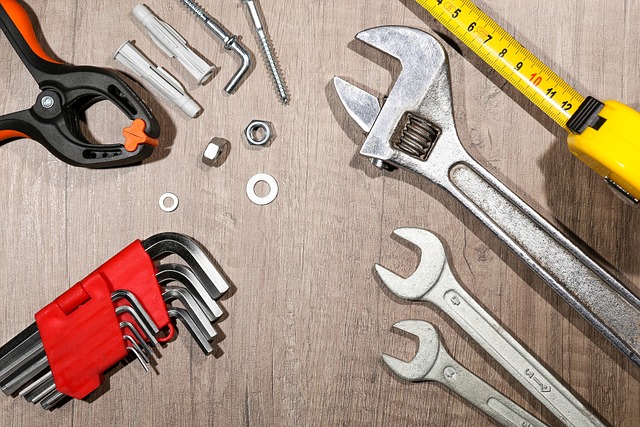DIY enthusiasts can streamline home repair and maintenance by avoiding common blunders like rushed projects without proper skill assessment or tools. Essential toolkit items include screwdrivers, wire strippers, pliers, measuring tape, levels, hammers, utility knives, adjustable wrenches, power tools, and online tutorials. Knowing when to hire professionals for complex tasks like electrical work or plumbing is crucial for safety and quality, prioritizing both in home repair and maintenance.
Are you a DIY enthusiast who sometimes runs into unexpected snags? Don’t worry, you’re not alone! This article is your go-to guide for navigating common home repair and maintenance blunders. We’ll equip you with essential tools and resources to tackle quick fixes confidently. From identifying frequent mistakes to knowing when to call in a professional handyman, we’ve got you covered. Get ready to transform your DIY failures into successes and keep your home in tip-top shape.
- Identifying Common DIY Blunders
- Essential Tools and Resources for Quick Fixes
- When to Call in a Professional Handyman
Identifying Common DIY Blunders

Many well-meaning DIY enthusiasts often find themselves caught in a web of common blunders that can turn even the simplest home repair into a frustrating nightmare. From misjudging tool requirements to ignoring safety precautions, these errors not only waste time and resources but can also lead to more significant issues down the line. Understanding these typical mishaps is the first step towards becoming a more proficient do-it-yourselfer.
One of the most prevalent DIY failures stems from a lack of proper planning. This may include rushing into projects without assessing one’s skills, gathering the right tools, or considering potential challenges. For instance, attempting complex tasks like plumbing or electrical work without the necessary expertise can lead to costly mistakes and safety hazards. Additionally, inadequate research on product compatibility and installation methods often results in inefficient home repair and maintenance practices.
Essential Tools and Resources for Quick Fixes

When it comes to DIY projects, every handyman needs a reliable toolkit filled with essential tools for quick fixes. For home repair and maintenance, having the right resources can make all the difference between a successful project and a frustrating failure. At the core of any handyman’s arsenal should be a mix of traditional and modern tools designed for versatility and efficiency.
A well-equipped toolbox should include items like a versatile screwdriver set (both flathead and Phillips), wire strippers, pliers, a measuring tape, level, hammer, utility knife, and a set of adjustable wrenches. For more complex tasks, consider adding power tools such as a drill with a variety of bits, circular saw, or angle grinder to streamline home repair projects. Online tutorials and DIY forums are also invaluable resources for troubleshooting and finding creative solutions to common home maintenance issues.
When to Call in a Professional Handyman

When do you know it’s time to step away from that DIY project and call in a professional handyman? While the desire to save costs and take on home repairs yourself is admirable, there are certain tasks better left to experts. Home repair and maintenance requires specific skills, tools, and knowledge—things that can be difficult for an amateur to acquire or master.
If you’re facing a project involving complex electrical work, plumbing, or structural changes, it’s best to leave it to the professionals. These areas of home repair demand specialized training and adhere to strict safety standards. Attempting these tasks yourself could lead to costly mistakes, injuries, or even fires—risks that far outweigh any potential savings. Always consider your safety and the quality of work when deciding whether to tackle a project DIY or hire a handyman professional.
When tackling home repair and maintenance, it’s essential to be prepared for DIY failures. By identifying common blunders, equipping yourself with the right tools and resources, and knowing when to call in a professional, you can efficiently navigate any challenges that arise. Remember, understanding basic home repair techniques is key to maintaining a well-kept living space.
